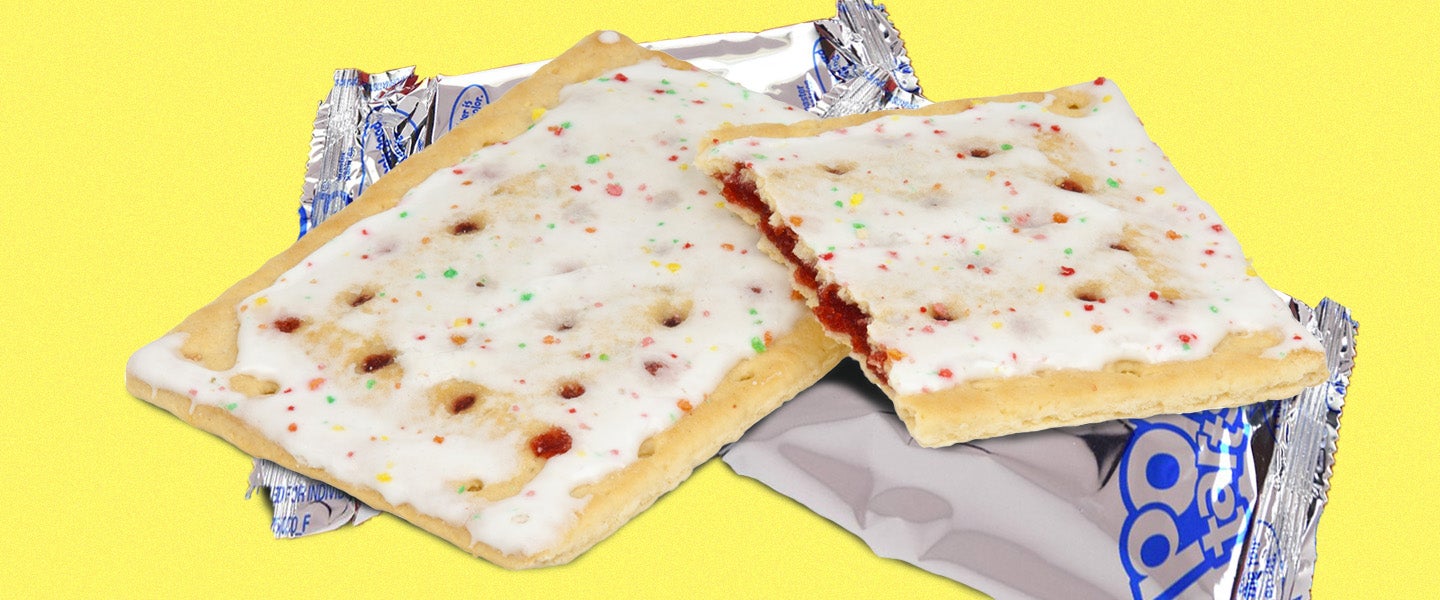I did the unthinkable a few months ago: I bought a box of S’Mores Pop-Tarts, and before cramming them into my mouth, I spun the package around, read the ingredients and typed up a condemnation of my once-beloved toaster pastries for being comprised of such atrocious crap (and then I ate the entire box anyway).
“Look, I know society has come to accept eating literal cake for breakfast,” I wrote. “But the fact is, Pop-Tarts are basically just empty wheat calories flavored with a bunch of sugar and a dash of truly horrifying chemicals.”
I sure told them, and in that moment, I was proud to be a crusader for good health. But several grueling months have passed since then. We weathered threats of World War III. We watched Australia and much of its wildlife succumb to raging wildfires. We voiced — and continue to voice — our disdain for the American medicare system as the coronavirus spreads across the world.
congratulations to everyone that completed the second month of 2020, in total you’ve survived:
– world war III threats
– a worldwide killer virus outbreak
– climate change bushfires
– yummy by justin bieber
– volcanic eruptionswe go again
may the odds be ever in your favour pic.twitter.com/AsTL42B2kt
— joe (@jxeker) March 1, 2020
Needless to say, times have been tough lately, and I find myself drifting further and further away from the person I was back then, when I declared that a life without Pop-Tarts was a life we should all strive for. I see now that the world is truly struggling, and if a Pop-Tart and its detrimental, but delicious, ingredients make even a single day better, perhaps the pros outweigh the cons.
I wonder, though, if we can find a middle ground? A place where we can maintain a semblance of good health, while still enjoying the comfort of sugar and artificial colors squished inside of a layer of frosted wheat; a place where we can look forward to a bright future, but also live in the moment, reveling in the simple pleasures that we could use now more than ever.
To that end, I wondered if any one Pop-Tart flavor can be that middle ground. Desperate to find out, I called Cate Shanahan, biochemist, past director of the Los Angeles Lakers PRO Nutrition program and author of the forthcoming dietary book, The Fatburn Fix. Her immediate reaction was to explain that, in order to identify the healthiest of Pop-Tarts, I was essentially on a hunt for the least unhealthy, because none of the flavors provide any adequate nutrition whatsoever. “The only variable would be the amount of sugar,” Shanahan says.
Going by that, I dug through some flavors and found that the sugar levels are mostly uniform across the board, with just a few outliers. For example, a single Brown Sugar Cinnamon tart has 15 grams of sugar, whereas a single Strawberry one has 16 grams. The slightly more sugary exceptions should be obvious: Chocolate Chip Cookie Dough, for instance, boasts 17.5 grams per tart, and S’Mores delivers a whopping 19 grams.
So, at this point, while none of the flavors are good, the more dessert-leaning flavors are especially bad, because they have more sugar.
Shanahan also briefly mentions that fat could play a role in one tart being healthier than another, but when I tell her that they all get their fats from some combination of soybean oil and palm oil — soybean oil is high in polyunsaturated fat, which Shanahan says “is increasingly understood to be unhealthy” — she again emphasizes that none of these flavors are good choices. I will say, however, that while the different flavors have varying amounts of fat, the fruity flavors once again appear to be consistently lower than the chocolate, more dessert-like ones.
At this point I started grasping for straws as the fruity flavors seemed to dash ahead of the pack, and I told Shanahan that, on their ingredients lists, these flavors also boast actual dried fruit — Strawberry contains dried strawberries, dried pears and dried apples — a potential nutritional boon. Skeptical, Shanahan says, “If there were any differences in the vitamin C content, that could be some indication that they used a slightly higher fruit content.” And, uh, even the flavors with dried fruit on the label contain 0 percent vitamin C, which means they must be adding only a pinch of fruit, or maybe some kind of fruit flavoring. Boo!
Nonetheless, the fruity flavors still seem to be the least worst, even if just a combination of sugar, unhealthy fats and nutritionless wheat. But Pop-Tarts also has a line of “Simply” tarts that are branded as a healthier alternative, which inspired a momentary glimmer of foolish hope. However, strangely enough, the Simply tarts contain more saturated fat and only slightly less sugar than the alternative, so I have no idea why these exist.
There is one other option, though, albeit an undesirable one: The unfrosted tarts, which are, again, just slightly lower in sugar than their frosted brethren. While a frosted Strawberry tart has 16 grams of sugar, an unfrosted one has only 12 grams. Which, depressingly, is enough to make any of the unfrosted, fruity Pop-Tarts (Strawberry or Blueberry) the healthiest of flavors.
Shanahan, however, recommends ditching Pop-Tarts altogether, opting for a healthier, homemade alternative, instead: Sprouted grain toast with real butter and almond butter or macadamia nut butter. “It will give you the same luxurious and very flavorful experience with a ton of nutrition, especially some healthy fats,” she says.
Or you could go with what dietician and nutrition therapist Rachael Hartley told me when I asked her about the healthiest Pop-Tart flavors: “I’d just say go with the one you find most enjoyable at that point.”
Which, honestly, is what I needed to hear right now.

